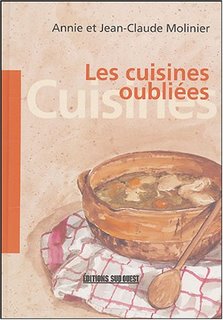 A recipe book review today – it is too gorgeously hot to think about cooking, so supper is some barbecued sausages in a bun.
A recipe book review today – it is too gorgeously hot to think about cooking, so supper is some barbecued sausages in a bun.
My brother, Ben, whose comments you’ll occasionally see on this blog, lives in Bordeaux, where he is a lecteur at the university. Ben hopelessly outcools me. He’s in a band called Beautiful Lunar Landscape – check out their official site and their MySpace page, where you can listen to some rather good music. You’ll enjoy it, especially if you like things like Jeff Buckley and the Velvet Underground. He appears above, the handsome devil, in an uncharacteristic suit (it was my wedding – I insisted), blowing uncharacteristic bubbles, accompanied by his extremely splendid girlfriend Katie.
Ben’s a foodie too. He asserts that his current aim in life is to consume every part of the pig. Ben – you are in for a shock. I have found a Chinese supermarket which sells the sex organs of the pig. Both varieties.
 My birthday present from Ben and Katie (and I’m sorry it’s taken me such a long time to get round to writing this) was an odd little hardback book from France. Les cuisines oubliees, by Annie and Jean-Claude Molinier, is a glorious peculiarity; a book of recipes so old-fashioned or rustic that they’ve fallen out of fashion. I’m afraid it’s only available in French; fortunately, my French unaccountably turned out quite good, so when I read the recipe for Blaireau au sang, I had just enough vocabulary to work out that what I was reading was a recipe for badger in blood, and not a new and exciting plot to overthrow the UK Government.
My birthday present from Ben and Katie (and I’m sorry it’s taken me such a long time to get round to writing this) was an odd little hardback book from France. Les cuisines oubliees, by Annie and Jean-Claude Molinier, is a glorious peculiarity; a book of recipes so old-fashioned or rustic that they’ve fallen out of fashion. I’m afraid it’s only available in French; fortunately, my French unaccountably turned out quite good, so when I read the recipe for Blaireau au sang, I had just enough vocabulary to work out that what I was reading was a recipe for badger in blood, and not a new and exciting plot to overthrow the UK Government.
The book’s full of this stuff. Beaver stew, coypu casserole, something rather dodgy-sounding with a cormorant, roast hedgehog, and a bear’s foot recipe which, say the Moliniers, can be adjusted slightly and applied to any baby elephant’s feet you happen to have hanging around in the fridge. There’s squirrel in a pot (peel and empty your squirrel); fox, which you are meant to leave, skinned, in a river for 72 hours before cooking because, frankly, fox doesn’t taste too great; and a magpie baked in clay.
This is a fantastic book. Sorry, Ben, but I’m unlikely to end up cooking anything from it; that said, it makes great bedtime reading, and is a marvellous tool with which to terrify impressionable French children. I’ll leave you with a translation of the recipe for badger in blood, which almost makes me wish I had a mantrap. (Clicking on the badgers will make them do exactly what you think they’re going to do. Turn the sound up. Today’s post is a multimedia extravaganza.)
To cook one badger you’ll need:
 1 badger
1 badger
1 glass of pig’s blood
1 small glass of armagnac
1 ginger root
1 bottle of dry, sparkling white wine
2 eggs
1 pot of crème fraîche
salt and pepper
500g forest mushrooms OR chestnuts to accompany
100g butter
oil
Eviscerate and skin your badger, and soak it in a fast-flowing river for at least 48 hours. This will help you to de-grease it more easily.
Once the badger is de-greased, cut it into pieces and brown it in a frying pan with butter. When the pieces are golden and stiff, flambée with the armanac, season and add a grated soup-spoon of ginger, fresh if possible.
Pour over the wine, and simmer gently for at least two hours.
At the end of the cooking time, mix the chopped badger liver (cooked beforehand in a little oil), the glass of blood, two egg yolks, a coffee-spoon of ginger and the crème fraîche, and pour into the cooking dish. Serve immediately.
This dish goes well with wild mushrooms or chestnuts.
You’ve tried this before – it’s the crunchy, raw vegetable relish served in many Thai restaurants. I served it alongside some sweet chilli sauce with Thai pork toasts. It’s very easy, and can be prepared in minutes, so if you’ve a little time, try shaping your vegetables. Somehow a carrot tastes about 300% nicer if it’s approximately flower-shaped.
Put the vinegar and sugar in a pan over a low heat, and stir until all the sugar has dissolved. Remove from the heat and set aside.



